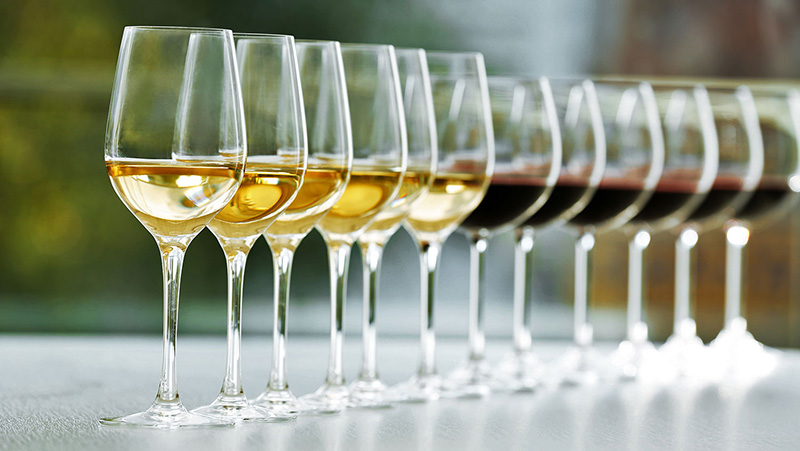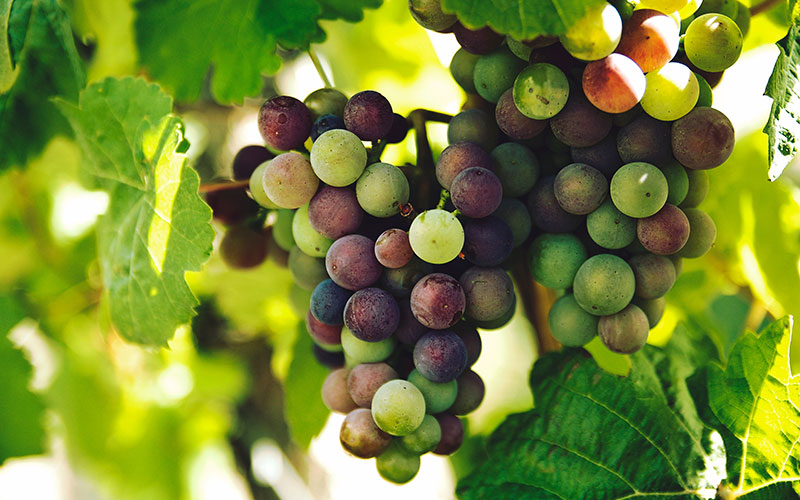The new year is just around the corner, and a trip to the winelands is no doubt on many 2019 to-do lists. With pen and paper making an appearance to write those inevitable New Year resolutions, it’s high time to add “become a wine tasting pro” somewhere near the top. Every wine has a story to tell, and we have a couple tips and tricks to make sure that the next time you’re sipping on that Chardonnay or Pinot Noir with your friends you’ll leave them wondering whether or not you spent your summer working in the vineyards.

WHERE TO START?
Attitude
Ever found yourself sitting at a wine tasting and thought to yourself, “How on earth do they get the smell of freshly cut grass scattered on a forest floor surrounded by roses?”. Truth is, there’s never a right or wrong answer when it comes to the the aromas and flavours that you experience when trying a wine. Never feel intimidated! Wine is a complex thing, even the real pros can’t know it all.
Glassware
Tall, short, stemless, round, crystal… The range of wine glasses available today is truly endless (and confusing!). Maybe a R1,500 glass tickles your fancy, or you’re quite happy with the glass you picked up at the 2015 Bastille Festival, but a good quality glass with a bowl and straight lip simply does the trick.
Temperature
A wine tasting pro knows a good temperature. It’s Chardonnay, not vodka. Give it a break from your ice-cold fridge, or at the very least a beanie. Serving your white wine too cold stunts the aromas. Similarly, serving your red wine too warm will make the alcohol jump out of the glass, overpowering any other aromas that may be present.
Ideal serving temperatures:
- White Wines: 45-50 °F or 7-10 °C
- Rosé Wines: 45-55 °F or 7-13 °C
- Red Wines: 50-65 °F or 10-18 °C
- Sparkling Wines: 42-52 °F or 6-11 °C
- Fortified Wines: 55-68 °F or 13-20 °C


HOW TO TASTE?
Colour
Hold your glass up to a white background and tilt it away from you. What do you see? The colour of a wine predominantly comes from contact with the grape skins after the grapes have been juiced. Is the yellow of your white wine very light or deep and golden? If the wine is darker in yellow, this is usually a good indicator that it was aged in an oak barrel or has spent some time in the bottle. Similarly with red wine, ranging from a light, brick red to a rich, deeper hue, darker red wines have usually aged in oak barrels.
Aroma
Start by swirling your wine around a few times to give it some air and let the aromas open up – a technique in itself. Stick your nose in the glass (don’t be shy) and slowly take a couple deep whiffs. This can be a little overwhelming at first, but start by thinking about these categories:
- Fruit
- Spices/Herbs
- Earthy/Savoury
- Flowers
- Nuts
Once you’ve done this you can start to get a bit more specific: Is it a certain type of fruit you’re smelling? Strawberries? Plums? Is there a hint of cinnamon or mint?
The scents that you smell can also indicate how the wine was made and its age. Buttery popcorn notes often mean the wine has gone through malolactic fermentation (a secondary bacterial fermentations), while vanilla or spicier notes suggest that there was barrel ageing. Younger wines often have fruity characteristics (primary characteristics) and older wines often give off earthier, more savoury notes (secondary or tertiary characteristics).
Palate
Last but not least is the actual flavour of the wine. With your very first sip, hold the wine in your mouth, swirl it around, and suck in a little bit of air.
A complex thing to narrow down at first, there are a couple of things to consider:
- Dry vs sweet – Fruity wines are often dry while dessert are considered sweet wines
- Acidity – The higher the acidity, the more you’ll salivate
- Body – The weightier the wine, the more body it has
- Tannins – The dry feeling that some red wines can give you and make your mouth pucker a little
- Simple vs complex – Complex wines evolve as you drink them, revealing something new as you enjoy them. Simple ones are one-noters, perfect for a day at the pool
- Flavours – Just like the categories discussed in the aroma, go through your list and see what flavours reveal themselves
And just like that, you’re set to be a wine tasting pro in the new year! Grab a bottle of wine, your favourite glass and swirl away. Or even better, put your skills to the test and book a day out in the winelands – our Best of the Cape Winelands Tour or The Red Wine Lovers’ Tour are the perfect tours to practice!